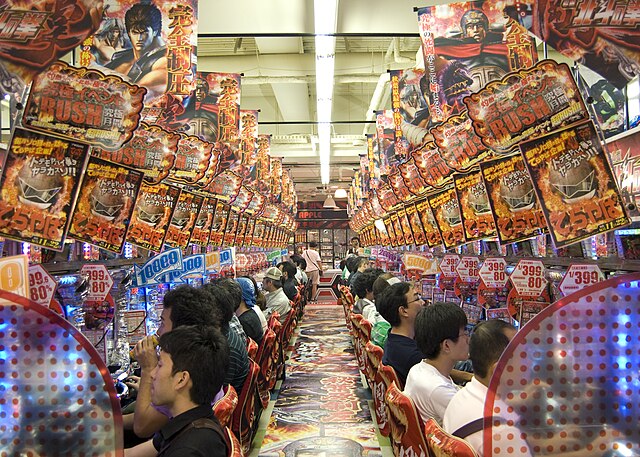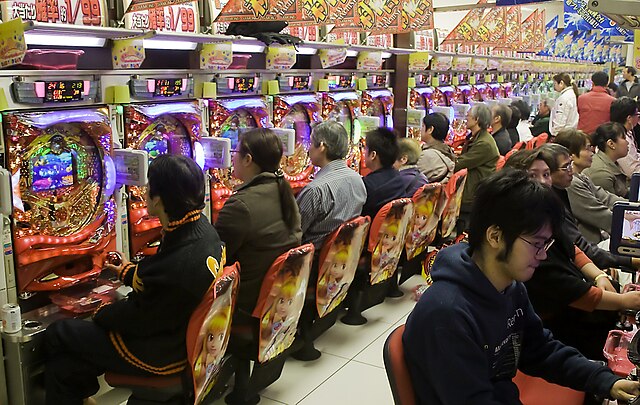
The Thammasat University Library has newly acquired a book that should be useful for all students who are interested in Japan, especially those who are studying political history, sociology, Asian studies, and literature. Pachinko is a novel by the Korean-born American author Min Jin Lee. It is shelved in the Fiction Stacks on the Underground 2 level of the Pridi Banomyong Library, Tha Prachan campus.
Pachinko tells the story of a Korean family that migrates to Japan. In describing the lives of Korean people in Japan, the book addresses such subjects as racism and ethnic stereotyping, as well as the historical context for modern interactions between Korea and Japan.
Min Jin Lee was born in Seoul, South Korea and immigrated as a girl to New York. She earned a bachelor of arts degree from Yale University in New Haven, Connecticut, the United States of America, majoring in history. She also received a doctor of laws degree from The Georgetown University Law Center, one of the professional graduate schools of Georgetown University in Washington, D.C.
Before becoming a full-time writer, Min Jin Lee made her living as a lawyer for several years in New York. For four years starting in 2007, she lived in Tokyo where her husband was employed, and researched and wrote Pachinko. She serves as a trustee of PEN America, an organization that works to defend and celebrate free expression worldwide by advancing literature and human rights. She also sits on the National Advisory Board of the Immigration Initiative at Harvard University, a research institute in Cambridge, Massachusetts
As its website explains:
While scholars have long sought to understand how immigrants adapt to their new homes and to a new way of living, immigration policy has become increasingly consequential in recent years in shaping how immigrants and their children experience life in the United States and abroad.
The Immigration Initiative at Harvard (IIH) was created to advance and promote interdisciplinary scholarship, original research, and intellectual exchange among stakeholders interested in immigration policy and immigrant communities. The IIH serves as a place of convening for scholars, students, and policy leaders working on issues of immigration — and a clearinghouse for rapid response, non-partisan research and usable knowledge relevant to the media, policymakers, and community practitioners.
In keeping with these emphases, our major lines of inquiry currently consist of:
- Research that focuses on the impacts of immigration enforcement on the everyday lives of immigrant children and their families
- Research that explores policies affecting the educational experiences and trajectories of immigrant students
- Scholarship addressing the intersection of immigration policy, place and educational supports
- Research that seeks to understand the relationships between immigration policy, health care and children’s development

Why the book is called Pachinko
In an interview from 2017, Min Jin Lee explained that her
novel was initially called Motherland, but Lee changed the title when she came to a realization: “Nearly every Korean-Japanese person I interviewed or researched was somehow related (either intimately or distantly) to the pachinko business, one of the very few businesses Koreans were allowed to work in or have an ownership interest.”
As all TU students know, pachinko is a type of mechanical game originating in Japan. Pachinko games are found in arcades in Japan, where they are played for fun, and also as part of gambling activities. Professor Allen Guttmann, Emily C. Jordan Folger Professor of English and American Studies, Emeritus of Amherst College, Massachusetts, wrote in The Journal of Asian Studies of May 2000 that seen from a European or American perspective, two of the most striking phenomena of Japanese popular culture are manga (Japanese-style comic books) and pachinko (an electronic game similar to a pinball machine). Manga have been intensively studied by serious scholars, but research into pachinko has been left, for the most part, to journalists… Today, 25 million Japanese sit shoulder to shoulder before 4.5 million machines in 15 thousand pachinko [parlors] where their escape from boredom costs them billions of dollars a year. If they are lucky, they win some of that money back in the form of prizes that can be exchanged for cash at special stores located in the vicinity of the [parlour]… Although pachinko is popular among Japanese women, the typical player is a young male employed in a large firm as a sarariiman (“salary man”).
Min Jin Lee told the interviewer in 2017:
The pachinko business—a multibillion-dollar industry with double the export revenues of the Japanese automobile industry—is often viewed with great suspicion and contempt by middle-class Japanese,” Lee says. “However, one out of every 11 Japanese adults plays pachinko regularly, and there is at least one pachinko parlor in every train station and shopping street in Japan. Pachinko is a game of chance and manipulation, and I was interested in this gambling business as a metaphor.
She informed another journalist in the same year:
You really can’t walk down the street or enter a single train station or go anywhere in Japan without seeing a pachinko parlour,” she explains. “And yet the middle class view this adult gambling game with enormous suspicion and a kind of contempt. When I interviewed all these pachinko parlour owners about how they messed around with the pins every single day to affect the payout, it occurred to me that pachinko is a rigged game. It isn’t gambling, it’s rigged. The house is going to win. And yet people still play! I think — and this is my little cynicism — that the world is an unfair place and yet we continue to play, and we continue to show up. We have to.
The many challenges that Koreans face in Japan are the subject of Pachinko, including job discrimination, civil and political rights, bullying and other experiences.
When asked by a literary website to name her favorite authors, Min Jin Lee mentioned the following:
I adore nineteenth-century writers Bronte, Eliot, Trollope, Dickens, Flaubert, Tolstoy, and Balzac. I also love Sinclair Lewis, Theodore Dreiser, Sherwood Anderson, William Faulkner, Edith Wharton, Ernest Hemingway, Zora Neale Hurston, Mark Twain, Tanizaki, Henry James, James Baldwin, and Ralph Ellison. As for modern living writers, I very much admire Lynn Ahrens, Lan Samantha Chang, Alexander Chee, Junot Díaz, Robin Marantz Henig, Kazuo Ishiguru, Colson Whitehead, Haruki Murakami, David Henry Hwang, Meg Wolitzer, Maxine Hong Kingston, Hilton Als, Simon Winchester, Chang-rae Lee, David Mitchell, Toni Morrison, Alice Munro, Gary Shteyngart, William Trevor, and Erica Wagner. The writings of Cynthia Ozick, Shelley Fisher Fishkin, Audre Lorde, Vivian Gornick, bell hooks, James Baldwin, and Virginia Woolf continue to encourage me to write more honestly and to dwell on subjects that matter to me.
As TU students may note, to write an interesting book, it is usually essential to read many interesting books. The TU Library owns books by, and about, a number of these writers.

(All images courtesy of Wikimedia Commons)
